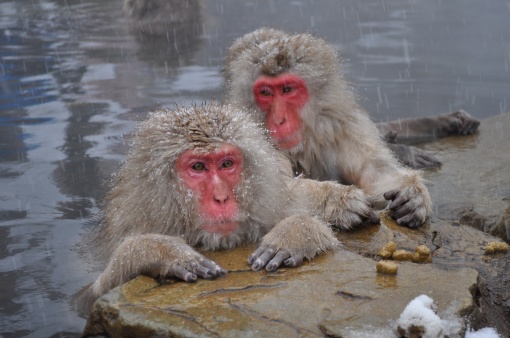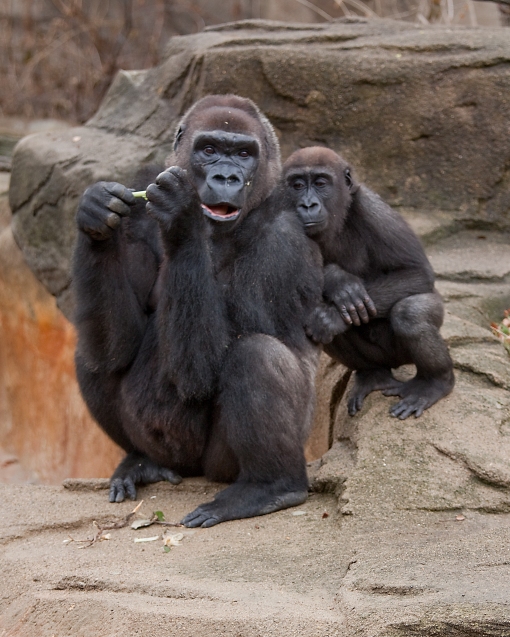It’s an open secret that it is not about HB1107, the new Education law that expanded the Board of Education for Prince George’s County in Maryland, but an extension of public corruption, which poses an existential threat to Prince George’s county. The Prince George’s county elite is the county’s own worst enemy.
That’s the single most important reason that’s prevented Prince George’s county from mimicking the Asian Tigers. It is public corruption that has prevented Prince George’s county from becoming a true democracy. Our elite here in Prince George’s county are sick — addicted to public corruption. Everywhere you look — right, left, sideways, behind, and in front — an official has their hand in the public till.
That’s why they don’t catch — and punish — each other because they are in it together. But the addiction to public corruption has fuelled another deadly, and shamefully obsequious, addiction — county, state jobs and senior public appointments by the county Executive or his appointee et al.
Not even the Constitution could cure this malaise. It has only simply “democratised” public corruption. Corrupt officials and others now seek their “racial share” of appointments under the guise of “regional or racial balance”.
And it’s OK as long as every ethnic elite gets an opportunity to pig at the trough. Trouble only explodes when these new rules of raiding the public purse are ignored, or broken. That’s why the Latino wing of Democratic Party here in Prince George’s county has been accusing its African American cousins that it’s being shortchanged in public appointments.
In Prince George’s county, the ethnic supporters of the winning political party expect “their turn to eat” to be respected. Or there’s hell to pay. That’s why winning elections is a license to loot the public treasury. This crescendo has gone a notch higher with the current county Executive Mr. Rushern Baker III working closely with previous regimes combined. There is no question Mr. Baker’s regime is the worst because of the deliberate nature of the crimes committed under his leadership.
This is the problem. In a modern county or state, economic innovation is usually facilitated by government, but carried out by private industry, state institutions, and research universities. However, under crony capitalism, these engines of growth are dulled by the primitive and kleptocratic accumulation of capital.
Usthinks this is Prince Georgenian’s Achilles Heel. Because of the under-developed political culture, Prince George’s county elite is a kleptocracy. A kleptocracy only knows how to manage crony capitalism. Our view is that Prince George’s county hasn’t broken free of the culture of patrimonialism, where power and wealth flow from top leaders.
You can’t get very far in Prince George’s county unless you are connected to a Big Man. More often than not, you need to know someone, like an ethnic “Godfather”.
The more things change, the more they remain the same. The county Executive is today cabined by seemingly democratic norms, but Prince George’s county functions the same way it did decades ago. The politics is ethnic and power is mobilised — and retained — through the race. “Racial kinsmen” must be rewarded. The problem is that there is only one way to reward cronies — public appointments.
But public offices alone wouldn’t make sense. The office must be capable of being looted. This is possible because the state and the county are the largest mobiliser of resources and money. In true democracies, it’s the private sector that dominates the economy, not the state. In many parts of the US, for example, you don’t go into public service to become rich.
But in Prince George’s county, you have an infinitesimal chance of becoming rich if somehow you aren’t connected to the county and the state.
Even wealthy businessmen who’ve never served in government, supplicate themselves before the county and the state if they want to prosper. Most of Prince George’s county wealthy served in government or have contracts with the government.
That’s why politicians and public servants are among the richest of Prince Georgeanians. Even a private newspaper would find it hard to survive without adverts from the county and the State. This explains why Prince George’s county elections are do-or-die affairs. As the loser, you are out of the gravy train. As winner, all the spoils belong to you.
In devolved government, this county has become the new locus for crony capitalism and public corruption unless citizens demand transparency and probity.
The crux of the elite addiction to state and county jobs and public appointments rests in granting public contracts, procurement, tendering, and “development” projects.
The major public scandals of the last two decades — appears to be HB1107, former county Executive Jack Johnson saga, and even the recent implosion of the over time money to a tune of $62.5millions can be traced to the lack of transparency in the procurement of goods and services. The bottom line is this: when our County Council and our county Executive Mr. Rushern Baker are reckless in overseeing the budget, particularly when they know the country and the county has been going through hard financial times, you will have to pay for it in higher taxes and fees, more speed cameras, diminished services, furloughs etc.
The brouhaha over the HB1107 is traceable to the lack of transparency in hiring the new CEO Dr. Kevin Maxwell and greed involving some of the leaders who conducted the interview process in order to secure certain contracts within the county. There’s now talk of shadowy cartels and “brokers” out to cannibalise the county over the CEO project which was dominated by Dr. Charlene Dukes and Dr. Lillian Lowery.
The granting of the Legal contract to Thatcher law firm and the hiring of a staff member from the firm a Mr. James Fisher in a wider scheme connected to public corruption begs the same questions. Why haven’t the contracts been made widely public? How much was Mr. Fisher rewarded as a salary to mess up things after leaving the Federal government in order to cover up wrong doing? The prince George’s County citizens deserve better answers for this unethical practice.
Finally, we partly blame the thieving of public servants on the County Executive Jack Johnson administration, which paved the way for county and state employees to engage in private business while on the job. County Executive Rushern Baker has simply perfected the art after being guided by his mentor and friend involved in the same. Above all, there is no question Mr. Baker was a secret admirer of Jack Johnson before Mr. Johnson was caught red handed by the Federal authorities. This explains why Mr. Baker influenced the hiring of Jack Johnson’s son even when there was a job freeze during the change of guard within the county leadership. At that time, County officials in the new administration of County Executive Rushern L. Baker III (D) declined to provide Johnson’s resume and covered up the issue to confuse the public. No one has ever taken responsibility and the issue was swept under the rug.
The idea may have been good — empowering the county residents to stimulate the economy — but the results have been bad. It is going to get worse. Watch this space…. We believe that lifting the ban whetted the appetites of civil servants to find both crude and creative ways to loot taxpayer dollars.
Virtually every senior civil servant went into business – and most of them are among the wealthiest Prince Georgeanians and politicians today. Many of these corrupt politicians are fighting tooth and nail to cling to these ill-gotten spoils by fervently supporting their mafia kingpins in Prince George’s county. The public needs to demand that the wolf in sheep’s clothing amount for all appointments and ill-gotten wealth.
We will continue to spotlight and track his every move. Once bitten, twice shy. We learnt from the previous administration that blind faith and a blank check approach promotes corruption and is a recipe for massive corruption as we are witnessing under Mr. Rushern Baker. Enough is enough. Prince George’s county citizens, please stand up for what is right and demand answers. What is currently in progress is unacceptable.
***
BUT WHAT IS CORRUPTION?
Corruption involves the injection of additional but improper transactions aimed at changing the normal course of events and altering judgments and positions of trust. It consists in the doers’ and receivers’ use of informal, extra-legal or illegal acts to facilitate matters. The concept can also be described as the wanton craze for illegal, unethical and often criminal acquisition of wealth or benefits by individuals whose main motive is ego bossing and self-aggrandizement with its attendant negative consequences on the rest of the society.
Put differently, corruption is a general concept describing any organized, interdependent system in which part of the system is either not performing duties it was originally intended to, or performing them in an improper way, to the detriment of the system’s original purpose (Aiyegbayo, 2007; Otite, 1986). As it were, there are myriad forms of corruption and these include: political corruption, bureaucratic corruption (misappropriation of public funds), money laundering (such as looted funds and wealth kept secretly abroad), gratification (which involves monetary, pecuniary, material or physical favors as a condition or reward for performing official duty), and nepotism which confers undeserved favors and advantages without receiving or giving gratification except that of primordial identity (Onimode, 2001). Of all these, political corruption is rated higher in many societies. This is because it induces other forms of corruption.
***
What Can You Do?
People often think that corruption is “just a way of life”, but every society, sector and individual would benefit from saying “NO” to this crime.
Here are some examples of how we all can say “NO” to corruption.
- Ratify and enact the UN Convention against Corruption.
Countries that successfully attack corruption are far more legitimate in the eyes of their citizens, creating stability and trust. - Know what Convention requires of your government and its officials.
Rooting out corruption allows social and economic development. - Educate the public about the government’s responsibility to be corruption-free.
Equal and fair justice for all is a crucial element for a country’s stability and growth. It also helps to effectively fight crime. - Raise awareness with the public, media and government about the costs of corruption for key services such as health and education.
All of society benefits from functioning basic services. - Engage the youth of your country or in county level about what ethical behavior is, what corruption is and how to fight it, and to demand their right to education.
Ensuring that future generations of citizens are brought up to expect corruption-free countries is one of the best tools to ensure a brighter future. - Report incidents of corruption.
Create an environment where the rule of law prevails. - Refuse to participate in any activities that are not legal and transparent.
Increases both domestic and foreign investment. Everyone is more willing to invest in countries or states when they see that funds are not being siphoned off into the pockets of corrupt officials. - Foster economic stability by enforcing zero-tolerance practices towards corruption.
A transparent and open business community is a cornerstone of any strong democracy.
Read more >>> Major Scandal underway.
Read more >>>Let us demand an end to this fraud.
***
















































































































